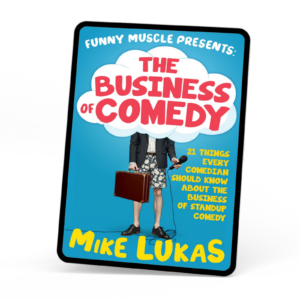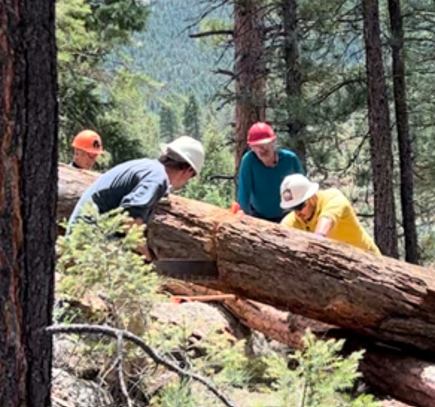
When Logs Attack...
Becoming a Wilderness Sawyer Is 40% Physics, 60% Comedy
We were standing in a circle amongst tall Colorado pine trees, all of us wearing hard hats, long sleeves, and the expression of people pretending they understand log compression and tension.
We were attending the first of a two-day workshop to gain our certification to become a sawyer—a trained individual who enters the wilderness equipped with personal protective gear, specialized knowledge of tree physics, and a saw the size of a canoe, in order to clear logs that are blocking hiking trails.
I was there because I have an adopted section of the 486-mile Colorado Trail. My task is to keep my 8-mile stretch free from downed trees, which, I learned, tend to fall in a very strategic pattern: directly across the trail, and always the diameter of a hot tub. My bow saw was no match. I needed some more training, and more importantly, access to a much bigger hand saw.
“Why don’t you just use a chainsaw?” you ask.
Because my section is in a designated Wilderness Area in which mechanized items like chainsaws, bicycles and anything that remotely resembles a jet ski aren’t allowed thanks to the Wilderness Act of 1964. The federal act famously defines wilderness as a place that “has outstanding opportunities for solitude”—a phrase that, as you’ll not recall from Civics Class, was written by Congressman “Cranky Carl” Witherspoon who had a traumatic college dorm experience: his roommate, Doug, owned exactly one cassette tape—Don McLean’s “American Pie”—which he played on repeat for an entire semester using a stereo the size of the Apollo Lunar Module.
This led Carl to envision a place where no people, no music, and absolutely no discussion of what “with the jester on the sidelines in a cast ” actually means. That place?
Wilderness.
The Act goes on to further describe wilderness as.
“…an area where the earth and its community of life are untrammeled by man….unless he has filed Form 4868 requesting a six-month extension to remain untrammeled for tax purposes, in which case he may temporarily trammel so long as the trammeling is not in a Chevy on the way to the levee, because the levee was dry and such activity does not interfere with a pop fly in foul territory, in which case Rule 5.09(a)(1) shall apply and the trammeling visitor shall be declared out.
That’s when the one instructor tossed out a bit of wisdom. He had a five-foot crosscut saw and strap slung over his shoulder like the world’s most aggressive purse, and he said:
“Have you ever heard the old scuba diver’s saying that there are two types of scuba divers…those who pee in their wetsuits and those who lie about it?”
Then he added, “Well there are also two kinds of sawyers: those who’ve gotten their blade stuck in a log… and those who lie about it.”
The group nodded solemnly. This was real, backcountry log-sawing wisdom.
Naturally, I saw my moment.
So I asked, “What do we do if we get a blade stuck? Should we pee on it?”
Big laugh. I felt like I had crushed it, comically speaking.
Except for the ranger, who looked at me with the expression of someone who does not believe the Forest Service Sawyer Manual allows improv.
That’s when I learned an important life lesson:
In a backcountry tree-cutting safety training, you don’t step on the ranger’s punchline. He’s got the saw. And the clipboard. And the authority to fail you as a sawyer student.
After that comic misstep, we reviewed the OHLEC Safety Procedure which answers the question, “How do I approach this giant, unpredictable, potentially murderous log without ending up crushed, pinched, smacked, stabbed, cut, splintered, flattened, concussed, impaled, or featured in an episode of “When Logs Attack!”
The checklist starts with
O: Objective: Where do I want this log to end up? (1)
H: Hazards: What wants to kill me?
L: Leans: Where will the blade get stuck at?
E: Escape Route: Where can I run to?
C: Cut Plan: What’s my sawing strategy?
The OHLEC checklist was the most important thing we learned during the classroom portion of the course during which we each received a student manual that taught the types of saw cuts in diagrams like the following:
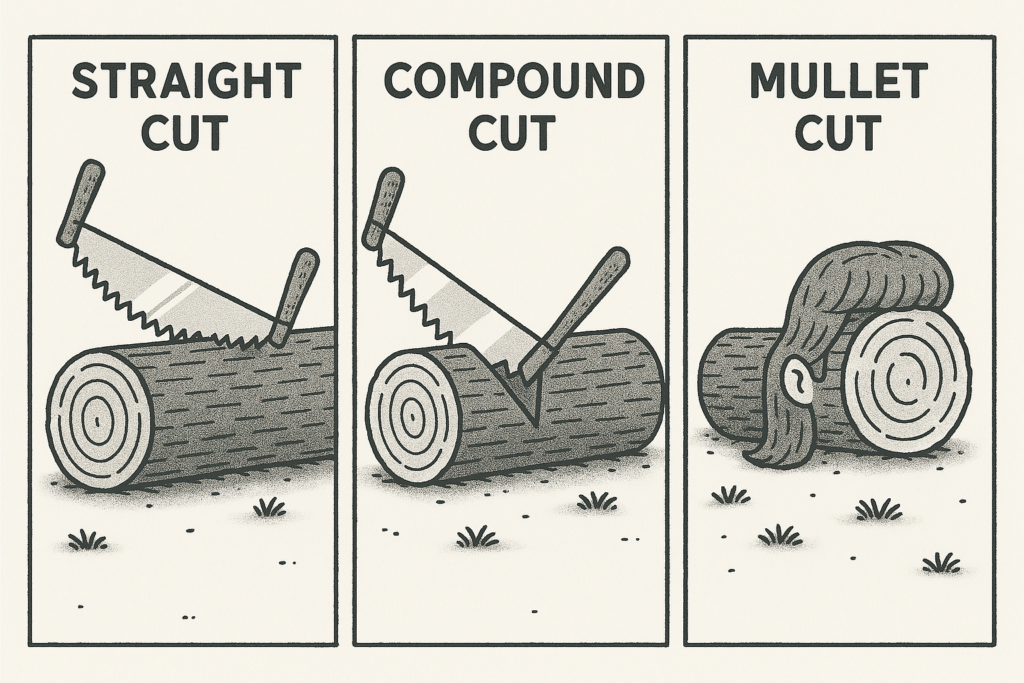
Source: U.S. Forest Cosmetology Institute
There’s a lot more to it than just learning when to yell “Timber!” The manual went on to describe a full list of safety requirements, cut plans, and tips on using wedges to keep from getting your saw blade stuck as well as some Do’s and Don’t like the following:
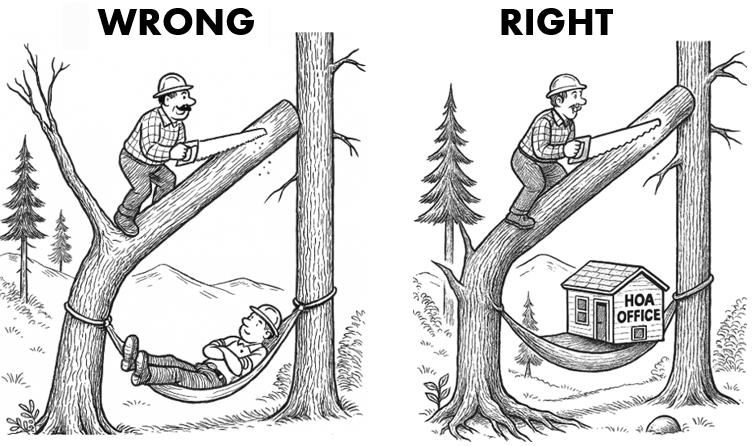
Source: Institute of Sawyers Against Unnecessary Home Fees
Once the OHLEC check list was complete, it was time to use the giant saw for the first time.
So there we were: me and my saw partner, standing on opposite sides of a fallen tree gripping what we dubbed “Sawus Maximus,” a tool that required equal parts teamwork, technique, and deltoids.
We started sawing. Back and forth. Back and forth. The blade squeaked. Sawdust flew. My arms burned. The sweat rolled down our faces.(2) But eventually, with one final pull, the tree split, the cut was clean, and the trail was clear. We had done it.
“In the words of Julius “Crosscut” Caesar, ‘I came, I SAWED, I conquered!’”
I didn’t say it outloud though. I only thought about it. I didn’t want to one-up the trainer again. Figured it was the best way to bury the hatchet, I didn’t want him to have an axe to grind.
Which apparently he didn’t because I earned my sawyer certification that day. And so far, I haven’t had to pee on a stuck saw blade once….I swear.
1 Correct Answers: rolled safely downhill or nearly lying neat to the trail; Incorrect Answers: on my foot or in my whiskey and rye
2 Like helter skelter in a summer swelter

Chris Stiffler
Author, Professor, Comic
Read more in Trail Headspace; Finding My Best Self on the Colorado Trail
Get your FREE copy of The Business of Comedy!
21 Things Every Comedian Should Know About the Business of Standup Comedy
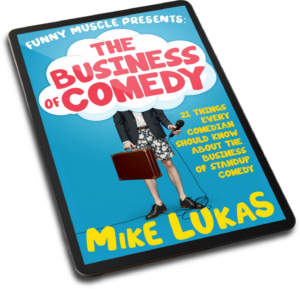
Includes:
- How Comedians are 5-Tool Players
- How to Attract a Following
- How to Get Bookings
- How to Create Multiple Income Streams
- Manager vs Agent
- And More!





